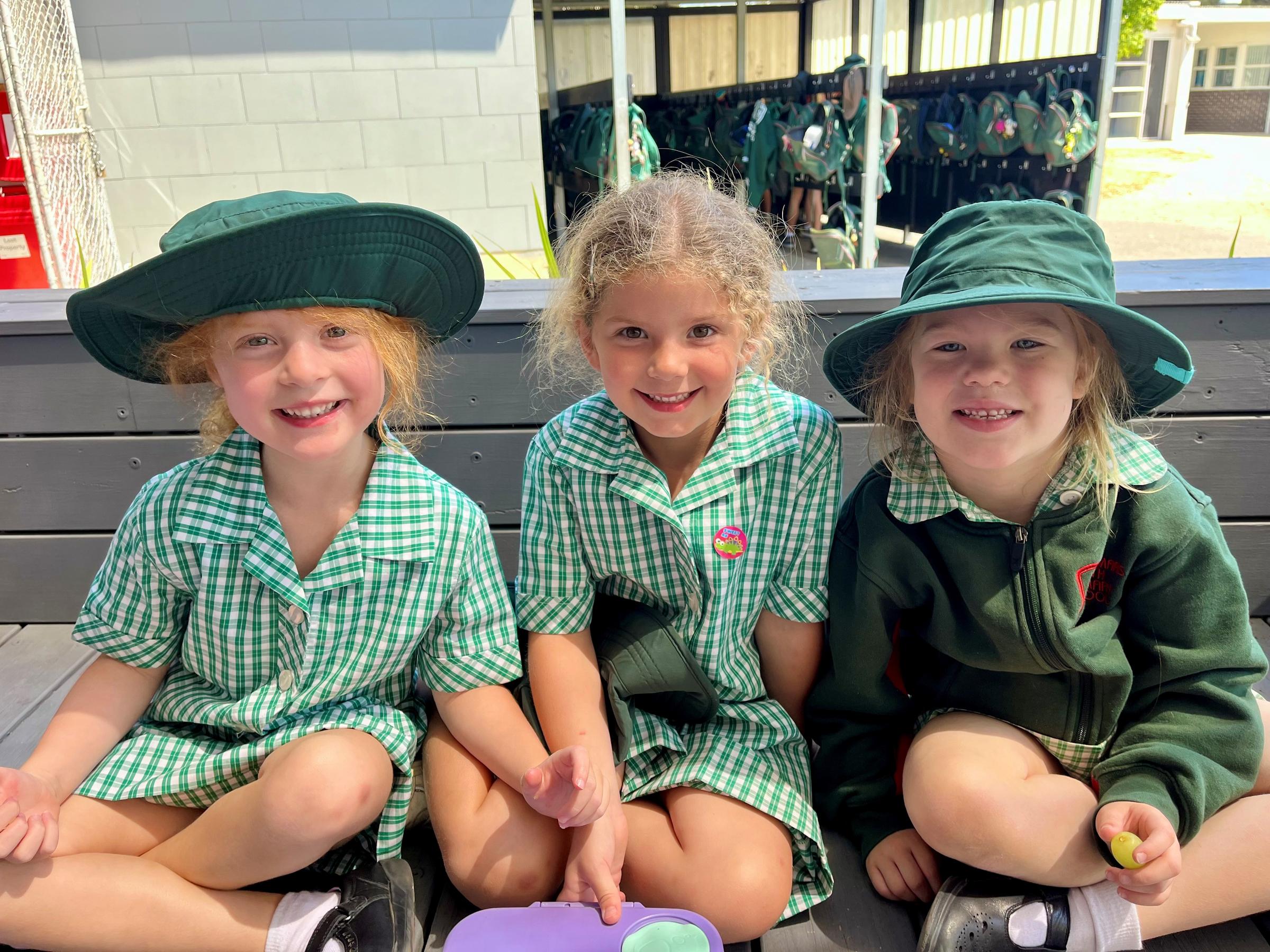Prep Specialist News - Term 4

Music
Transdisciplinary theme: How we organise ourselves
Central idea: Schools are organized to help us learn and play together
Lines of inquiry:
- The school buildings and grounds.
- Why people go to school
- The people who work at our school and their roles, routines and systems
- How the music room is organised
Key Concepts: function, causation
Learner Profile Attributes: caring, principled
Students will:
- Remember organisational aspects of the music lesson, like routines and expectations
- Demonstrate good listening skills when instructions given or music played
- Learn and use new music vocabulary
- Investigate ways to improve their singing and play instruments correctly
- Enjoy a leadership role as they take part in action rhymes and games
- Show respect by learning to look after each other and classroom instruments
- Demonstrate appropriate behaviours when being a “performer” or “audience member”
- Listen and respond to music through movement.
- Listen to and appreciate different styles of music
- Keep the beat when playing instruments together
- Recognise and respond to changes in Tempo, Pitch, Dynamics, Beat
- Sing songs related to the unit of inquiry: e.g. Marching Song, Kindness Is Free, Sharing Song
Art
Transdisciplinary theme: How we organise ourselves
Central idea: We organise art elements to create our own unique visual language
Lines of inquiry:
- The many ways of mark making and line drawing, experimenting with various techniques, styles, and tools
- The magic of colour mixing and the importance of the three Primary Colours
- How artists use basic elements to create balance and harmony in their artistic creations
Key Concepts: function and causation
Learner Profile Attributes: inquirers and risk takers
Students will:
- Create - Experimenting with mark making and line drawing. Exploring marks made by the side and other parts of the oil pastel to create Tibetan Butter Sculptures, inspired by ‘Losar’ the Tibetan New Year. The students design, paint, and incorporate their experimental mark making to add a decorative element.
- Explore - Colour mixing Primary Colours to create Secondary Colours- Introduced with colour books ‘Vashti’s Dot’ and ‘Colours.’ The students experiment and explore colour mixing and shape with a variety of art materials
- Develop - Using the result from the colour mixing experiment to collage and draw a final artwork, inspired by the Spanish artist Miro
Library
Transdisciplinary theme: How we organise ourselves
Central idea: Schools are organized to help us learn and play together
Lines of inquiry:
- The school buildings and grounds
- Why people go to school
- The people who work at our school and their roles, routines and systems
- How the library room is organised
Key Concepts: function, causation
Learner Profile Attributes: caring, principled
Students will:
- Introduce the library setting to the children and discuss what a library is used for
- Introduce parts of a book (title, cover, call number, spine, title page, author and illustrator.)
- Increase the children’s literature awareness and appreciation with stories and follow up discussions
- Identify the ‘Picture Fiction’ area and how to browse, borrow, and return a book
- Discuss the importance of library bags.
- Discuss how to put books away – alphabetical order, front cover facing, correct way up.
- Bring the children’s attention to the Library Essential Agreement
- Read ‘Billy and the Big New School’ by C&L Anholt and discuss the areas of school, incorporating Preps UOI ‘How We Organise Ourselves’ - “Schools are organised to help us learn and play together”
Japanese
Transdisciplinary theme: How we organise ourselves
Central idea: Schools are organized to help us learn and play together
Lines of inquiry:
- The Japanese classroom and sensei (Japanese teachers)
- Why prep students learn Japanese language and its culture.
- Routines and Essential agreements in Japanese lessons.
Key Concepts: Function and Responsibility
Learner Profile Attributes: Thinker, Inquirer
Term focus: (language and culture) Japan, Greetings, Japanese alphabet/writing style, Classroom instructions
Students will:
- Tell where Japan is.
- Know how to greet the teacher and know about Japan (SENSEI, Japan(ese) around them)
- Know how to greet and farewell the teacher (KONNICHIWA, SAYONARA)
- Copy Japanese alphabet for their name.
- Understand yes and no in Japanese.
- Respond to teachers' instructions in Japanese.
- Sing Japanese songs with SENSEI.
- Understand what ORIGAMI is and try out an animal origami
- Say the Japanese Essential agreements repeating after SENSEI.
Physical Education
Transdisciplinary theme: How we organise ourselves.
Central idea:
Students work towards understanding how rules and activities develop the connection between body and mind
Lines of inquiry:
- Developing coordination and balance
- Cross pattern movements
- Spatial awareness
- Fine motor skills
- Providing a foundation for expressive communication through movements and gestures
Key Concepts:
Form:
Focusing on our synchronised movements using effective communication, clear instructions, active listening and collaboration with others throughout.
Responsibility:
Can we look after our equipment respectfully, listen actively to others, interact with other class members positively and with clear communication. Understanding that any of our actions towards others can make an impact.
Learner Profile Attributes:
principled and caring
Students will:
- Working together as a group showing respect and cooperation with others. Being principled and caring for each other by being involved in Team building games, parachute activities and PMP movements
- Movement within specific areas in an external or internal environment, adhering to rules, working together using various types of equipment in PMP
- Develop an awareness of their own bodies and what movements they can make safely and with form and expression
- Coordinate mind and body movements with responsibility for others and yourself
Science
Curriculum strand: Earth Science
Central idea: The Earth, Sun and Moon are in constant movement with each other
Lines of inquiry:
- What causes night and day?
- How are shadows are formed and why do they seem to move?
- Science involves testing predictions by gathering data and using evidence to develop explanations of events and phenomena
Learner Profile Attributes: openminded
Students will:
- Investigate what causes night and day.
- Investigate how shadows change through-out the day and link these changes to the Sun’s apparent movement across the sky
- Explore the sizes, shapes, positions and movements of the Sun, Earth and Moon
- Through investigations, explain night and day in terms of the earth spinning on it’s axis
